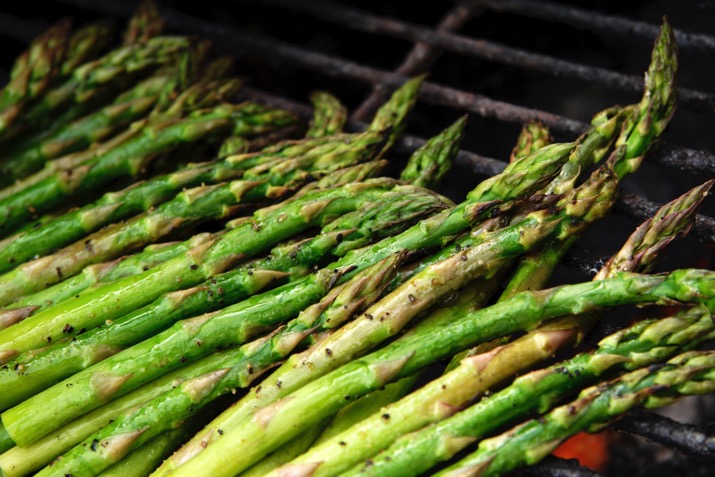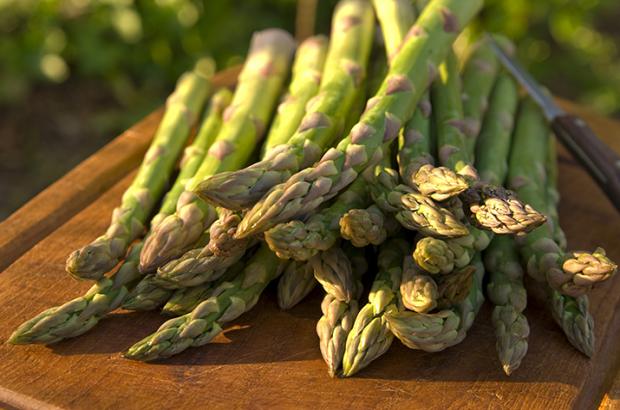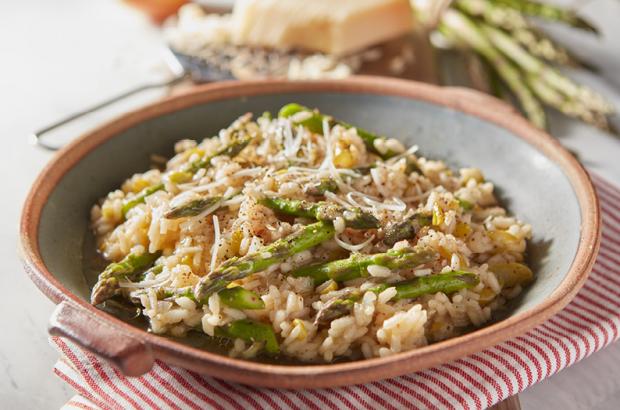Article
Asparagus

Sure, asparagus has undeniable culinary allure, but almost equally captivating is the way that it grows. From its crown, a spear can grow up to ten inches in one day, which means that you could actually sit and watch your asparagus grow. After harvest, asparagus plants sprout ferns that produce berries (not edible) and the nutrients necessary to grow more spears the next season. Meanwhile, the roots spread underground via rhizomes. While it typically takes a few years from planting to establish a strong crop, once it gets going, a well-tended asparagus bed might just continue to provide asparagus for 15 years without needing to be replanted.
The name “asparagus” comes from the Greek word for stalk or shoot, asparagos. It was the Greeks who first cultivated asparagus (and relied on it to cure toothaches and prevent bee stings) about 2,500 years ago.
Asparagus is a top-notch supplier of folic acid and a good source of vitamins C and A, potassium, fiber, vitamin B6, and thiamin—pretty great for a low-calorie, fat-free, cholesterol-free treat.
There are about 300 varieties of asparagus, though only about 20 of them are edible. The ones you'll most likely run across in the produce aisle are Jersey King, Jersey Giant and Jersey Knight. These are green varieties, but you can also find purple and white varieties. The white, which is more delicate and tender than the green, is grown by mounding earth over it as it grows, hindering its chlorophyll content. Purple asparagus is small, just two to three inches tall, and has a subtle, fruity flavor.
While asparagus originated in the Mediterranean, today it's grown in most subtropical and temperate areas of the world. The largest producers are China, Peru and Germany. In the United States, the leading producers are California, Washington and Michigan.
Though distinctive, asparagus is a versatile vegetable. It can be steamed, stir-fried (along with red peppers and other colorful vegetables, as in this Asparagus Stir Fry), baked, roasted or grilled. It shines as an appetizer (just serve with a dipping sauce like aioli, or along with other veggies, meats and cheese, as in this Asparagus Antipasto Platter, or atop crackers spread with a soft cheese). Use it as a garnish, as a side dish (drizzled with fresh lemon or a mustard vinaigrette), in tofu dishes, or atop pasta. Asparagus has a real affinity for eggs, too. Try this Asparagus Strata with Zesty Mediterranean Garnish or this Asparagus and Bell Pepper Quiche.
Asparagus pairs well with other vegetables, like mushrooms, cherry tomatoes, scallions, and carrots. In the meat department, it complements bacon, ham, prosciutto, fish, seafood and chicken. In the cheese aisle, pair it with a fontina, Parmesan, Gruyere, or Brie. Pasta, rice and farro are enhanced with a side (or topping) of asparagus. And for seasoning, think garlic, tarragon, ginger, dill and chives.
A harbinger of spring, you'll find fresh asparagus from April through early June. Look for firm, rounded, odorless, bright green spears with compact, uniform tips. Avoid limp stalks. You might want to choose uniform stalks, so they'll cook at the same rate. Though the spears do come in different thicknesses, the size of the spear makes no difference in quality (both thick and thin are tender and delicious). Thick spears are great for grilling or roasting, while thinner spears are perfect for stir-fries and frittatas.
It's okay if there's a little woodiness at the base of the asparagus stalk—this helps keep the stalk from drying out. Just snap off this white, woody portion before cooking.
Once home, store your asparagus away from light (which destroys the folic acid content). Wrap the ends in a moist paper towel, or stand the spears upright in a glass or container with a couple of inches of water. Then place in the refrigerator and use within two or three days.
The arrival of asparagus—in your own garden or at your local co-op or farmers market—is truly cause for celebration. Welcome spring! Welcome asparagus!
Read more about preparing and cooking asparagus in Asparagus: A Sure Sign of Spring.













